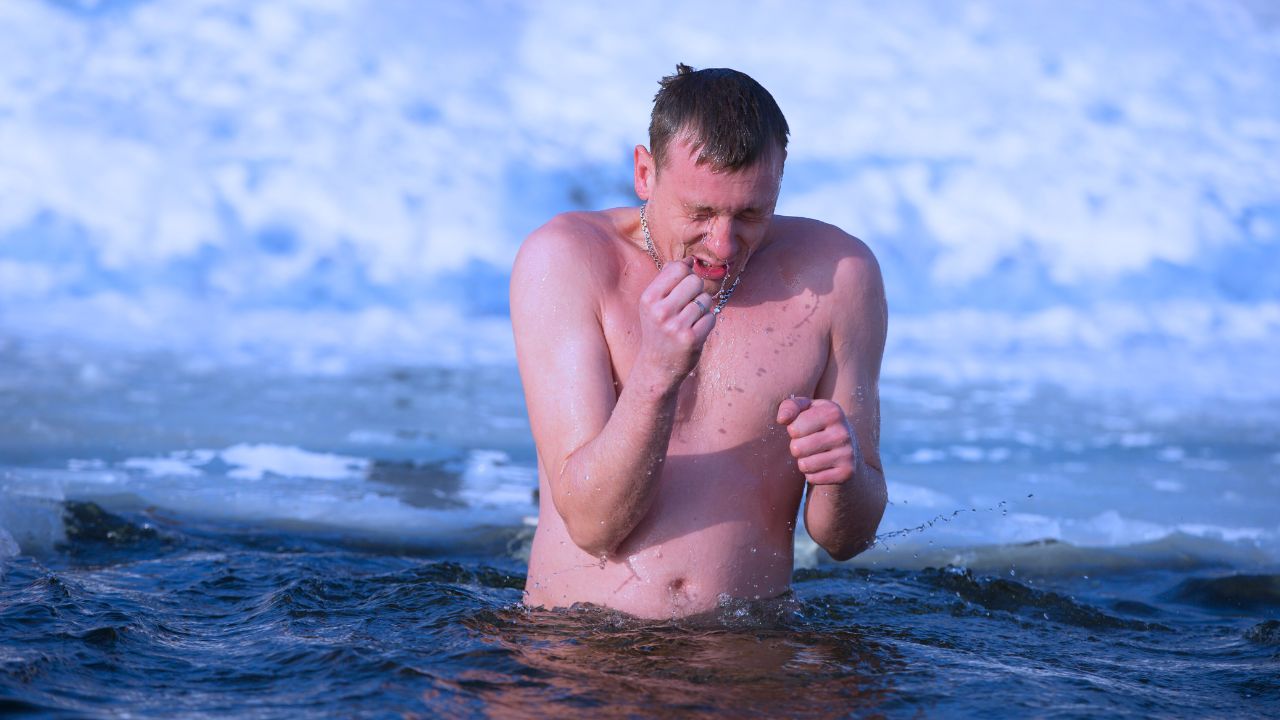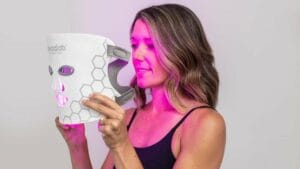This article has been medically reviewed by experts to ensure it provides accurate, reliable, and up-to-date health information. We only use credible sources to support our content.
Taking an ice bath (cold plunge) can be a game-changer for recovery, performance, and even mental health, but how cold should the water be, and how long should you stay in? In this guide, we’ll explore the ideal ice bath temperature and timing (the “cold plunge time and temp”) for various goals – from muscle recovery to mental well-being – all backed by research.
We’ll also provide practical tips for first-time users and safety guidelines.
Quick Key Takeaways About Ice Baths
Optimal Temperature Range: Aim for an ice bath water temperature between 50–59°F (10–15°C) for most benefits. This range is cold enough to spur muscle recovery and reduce inflammation without being unmanageable for most people. Beginners can start at the higher end (~60°F/15°C), and experienced cold plungers may gradually go as low as 32–40°F (0–4°C) for short durations once acclimated.
Recommended Duration per Session: Start with 2–3 minutes in the cold water and gradually build up. A common target is about 5–10 minutes per ice bath, and 15 minutes is usually the maximum to avoid risks like hypothermia. It’s normal to begin with shorter exposures (even 30–60 seconds) and add time as your tolerance improves.
Frequency & Weekly “Dose”: Consistency is key. Research suggests around 11–15 minutes total cold exposure per week (e.g. 2–3 sessions) yields significant benefits. For example, three 5-minute ice baths a week or five 3-minute sessions can fulfill this minimum effective dose. Adjust frequency based on your recovery needs, but allow rest days between intense cold sessions.
Timing Matters for Goals: For workout recovery, an ice bath immediately post-exercise can reduce muscle soreness and speed up recovery. However, if muscle growth or strength gains are a goal, wait at least a few hours after weight training – or do cold plunges on rest days – since immediate cold may blunt muscle adaptation from strength workouts. Many users find the morning the ideal time to cold plunge for a mood and energy boost, whereas late-night ice baths might disrupt sleep.
Safety First: Always listen to your body. First-timers should start warmer and shorter, never exceeding 10–15 minutes in near-freezing water. Exit the bath if you start uncontrollable shivering, numbness, or feel lightheaded. Have a warm plan to reheat gradually after the plunge, and consult a healthcare provider if you have cardiovascular or health concerns. (Cold exposure causes a spike in heart rate and blood pressure – use caution if you have conditions that could be aggravated.)
What is the Ideal Ice Bath Temperature?
Ice Bath Temperature Chart
| User Level | Temperature (°C) | Temperature (°F) | Recommended Time |
|---|---|---|---|
| Beginner | 15–20°C | 59–68°F | 1–3 minutes |
| Intermediate | 10–14°C | 50–57°F | 3–6 minutes |
| Advanced | 4–9°C | 39–48°F | 2–5 minutes |
| Extreme/Experienced Only | 0–3°C | 32–37°F | 1–2 minutes max |
What water temperature counts as an “ice bath”? Experts generally define cold water immersion as water at or below 59°F (15°C). Within that range, you can fine-tune how cold to go based on your goals and experience level:
Standard Range (50–59°F / 10–15°C): This is the sweet spot for most people. In this range, the cold is intense enough to trigger beneficial physiological responses (like reduced inflammation and metabolic boosts), but it’s still tolerable enough that you can remain submerged for a few minutes. Studies and coaches often cite roughly 54°F (12°C) as a middle-of-the-road target for ice baths used in sports recovery. If you’re unsure where to start, somewhere around 55–60°F (13–15°C) is a good beginner-friendly cold plunge temp that will still provide benefits.
Colder Extremes (32–50°F / 0–10°C): Going below ~50°F (10°C) is very intense and typically for experienced cold plungers or specific protocols. Athletes or seasoned individuals might venture down to 40°F (4°C) or even near freezing 32°F (0°C) water. At these temperatures, the water shock is severe and exposure times must be very short (often just 1–3 minutes). The payoff is a massive adrenaline and endorphin rush – cold this extreme triggers a fight-or-flight response. For example, one physiology study found that 14°C (57°F) water caused a 530% increase in norepinephrine (adrenaline) and 250% increase in dopamine in the body– imagine how an even colder bath might amplify that surge.
Important: Such cold extremes are not necessary for most benefits. They carry greater risk (numbness, “afterdrop” body temperature drop, etc.) and should only be attempted once you’ve built up a high cold tolerance, and usually under supervision.
Some people train their cold tolerance further using breathing practices like the Wim Hof Method, which combines cold exposure, controlled breathing, and meditation. This method has helped many tolerate colder water — sometimes below 5°C (41°F) — for short durations. A peer-reviewed study found that trained participants were able to influence their autonomic nervous system and reduce inflammatory responses during cold stress, which suggests techniques like Wim Hof’s may improve how the body adapts to extreme cold (Kox et al., 2014). Still, even with training, cold plunges near freezing should only last a couple of minutes and be approached with caution.
“Warmer” Cold Baths (59–68°F / 15–20°C): At the upper end, water that’s 60–68°F (16–20°C) may not feel like an ice bath in the traditional sense (it’s more like a cool swim), but it can be useful for mental refreshment and gentle adaptation. In fact, if your goal is stress relief or a mood lift, slightly milder temperatures in this range can work while being easier to handle. You can stay in a bit longer as well (toward the 10–15 minute mark) at these temps. Many beginners start here; even cool showers (~65°F/18°C) can acclimate your body when you’re new to cold exposure.
However, keep in mind the ideal ice bath temperature can vary per individual. Some people naturally tolerate cold better. As a rule of thumb, choose a temperature that feels uncomfortably cold but not outright unbearable. You should feel a strong urge to gasp or hyperventilate when you first submerge – that reflex is normal – but you should still be able to control your breathing after the first 30 seconds. If the water is so cold that you’re in pain or panicking, ease up a bit (either warmer water or shorter time). The goal is to reap benefits, not to torture yourself. Over several sessions, you’ll likely find your tolerance improves and you might gradually lower the temperature.
Many modern cold plunge tubs and ice barrels come with thermometers or built-in chillers to set exact temperatures. Use these tools to experiment within the ranges above. For most users, somewhere around 50–59°F (10–15°C) hits the “goldilocks” zone of cold – plenty chilly to be effective, but manageable enough to safely build a habit.
How Long Should You Stay in an Ice Bath?
Ice Bath Duration Chart
| Water Temperature | Recommended Time | Notes |
|---|---|---|
| 20°C+ (68°F+) | 10–15 minutes | Feels like a cool bath; good for adaptation and relaxation |
| 15–19°C (59–67°F) | 6–10 minutes | Mild cold; suitable for most beginners |
| 10–14°C (50–57°F) | 3–6 minutes | Optimal recovery zone for most people |
| 4–9°C (39–48°F) | 2–4 minutes | Intense; only after some cold tolerance |
| 0–3°C (32–37°F) | 1–2 minutes max | Extreme cold; for experienced individuals only |
Duration – or how long you immerse per session – is the other half of the “cold plunge time and temp” equation. Both science and experienced practitioners agree: you don’t need to stay in for very long to get benefits. In fact, sessions longer than 10 or 15 minutes are generally not recommended without medical supervision, no matter how cold the water is.
General Guidelines for Time in Cold Water
Beginners (0–2 weeks of practice): Start with very short exposures, around 1–3 minutes per session at a moderate cold temperature. It’s completely fine if your first ice bath is only 30 seconds – ending early is better than overextending. As a beginner, your body is still learning to cope with the shock of cold; even brief dips will stimulate adaptation. For instance, an entry-level protocol might be 2 minutes at ~59°F (15°C) to start. Over your first couple of weeks, you can try adding ~30 seconds each session if it feels okay.
Typical Sessions (once adapted): 3–5 minutes is a common duration for a cold plunge at ~50°F (10°C). In this window, people often experience the major wave of endorphins and numbing of the skin, without getting too unbearably cold internally. Many athletes use 5 minutes as a standard ice bath time after training. If the water is a bit warmer (say 59°F/15°C), you might extend to ~8–10 minutes. If it’s colder (40°F/4°C or below), even 2 minutes can be a challenge. If you’re practicing a breathing technique like the Wim Hof Method, you may find it easier to stay in the cold longer — especially in moderately cold water (around 50–59°F / 10–15°C). The controlled breathing helps override the urge to panic and keeps your heart rate more stable. However, even if you feel mentally calm, it’s still important to respect your body’s limits. Don’t rely on breathwork to push too far. Use it to stay focused, but always listen to physical signs like shivering, numbness, or dizziness.
Upper Limits: 10 minutes is a good practical upper limit for most ice baths. Beyond 10–15 minutes, the risk of hypothermia increases significantly as your core temperature may start dropping. Prolonged cold can also cause frostnip on extremities if water is near freezing. There’s generally diminishing returns after a certain point – you get most of the physiological benefits in the first few minutes of cold exposure. Experts often cap sessions at 15 minutes maximum even in moderately cold water. If you’re in extremely cold water (near 32°F/0°C), the max might be just 2–3 minutes. Always err on the side of caution. It’s better to do multiple short cold sessions per week than one dangerously long plunge.
Listen to Your Body: The clearest signal to end a session is uncontrollable shivering. Mild shivering is normal, but if you start shaking vigorously or feeling your teeth chatter, it’s time to get out and warm up. Numbness or tingling beyond the initial skin prickle is another warning sign. Everyone’s tolerance is different – one person might comfortably do 8 minutes, while another hits their limit at 4 minutes. Respect your personal limits. As you build more cold exposure experience over weeks and months, you might notice you can handle a bit longer without shivering – but never force it. There’s no merit badge for pushing past your safe zone.
Why short sessions work: You might wonder, if a little cold is good, why not stay longer? The body’s cold shock response happens almost immediately upon immersion – your blood vessels constrict, adrenaline and noradrenaline spike, and your nervous system goes on alert. These reactions kickstart the recovery and adaptation benefits we seek (reduced muscle inflammation, neurotransmitter release, etc.)
Extending the time mainly increases strain and risk. Research indicates that multiple short cold immersions per week outperform a single long immersion for ongoing recovery and health gains. In other words, frequency beats duration (up to a point). So focus on getting a regular cold plunge habit rather than pushing marathon ice baths.
Are you looking for ice bath tubs? You may like these:
Weekly Cold Exposure: How Often?
Ice Bath Weekly Frequency Chart
| Experience Level | Weekly Cold Exposure | Suggested Schedule | Notes |
|---|---|---|---|
| Beginner | 6–10 minutes | 2–3 sessions × 2–3 minutes | Start slow and gradually increase |
| Intermediate | 10–15 minutes | 3–4 sessions × 3–5 minutes | Balanced approach for recovery and adaptation |
| Advanced | 15–20 minutes | 4–5 sessions × 4–5 minutes | For experienced users with higher tolerance |
| Performance Athletes | 12–18 minutes | Post-training or high-intensity days only | Adjust based on training volume and recovery needs |
Beyond each session’s length, consider how many sessions per week to do. The good news: you don’t need to do an ice bath every day to see results. In fact, recovery experts have converged on a rough weekly “prescription” for cold exposure:
Aim for ~11–15 minutes total per week. This guideline comes from analyses of cold exposure on metabolism and immune health and has been popularized by wellness researchers. It suggests that if you accumulate around eleven to fifteen minutes of cold immersion in a week (split across sessions), you’re hitting an effective dose for benefits like improved metabolism, circulation, and mood.
For example, you might do 3 sessions of 5 minutes each, or 5 sessions of 3 minutes each – any combination that sums to ~15 minutes total. One scientific review on optimizing cold-water therapy found optimal recovery outcomes at ~12 minutes total weekly exposure in 11–15°C water.
Common schedule: Many people do 2–3 ice baths per week. For instance, you might cold plunge on Monday, Wednesday, and Friday. This allows a day or two in between for your body to fully warm up and reduces any strain from frequent cold stress. If you’re using cold primarily for post-workout recovery, you might schedule it after your hardest training days of the week. If using it more for general health/mood, you might do it every other morning.
Can you do daily cold plunges? Yes, some enthusiasts do a short cold immersion every day (especially those focusing on mental or metabolic benefits). Daily cool showers are generally safe for adaptation. However, with very intense ice baths (e.g. near freezing temps), daily can be too taxing and uncomfortable. If you choose to go daily, keep the sessions on the shorter side (2–5 minutes) and pay attention to how you feel. It’s also okay to mix and match – e.g. cold showers on most days and a couple of deeper ice bath sessions per week.
Recovery vs. adaptation trade-off: If you are an athlete in heavy training, consider timing your cold sessions strategically. While frequent cold water immersion helps reduce fatigue and soreness, it might also slightly dampen the natural inflammation that signals muscle adaptation. One meta-analysis found that cold water immersion after every workout (daily) could attenuate gains in muscle size and strength over time. For this reason, some coaches advise limiting ice baths to 2–3 times weekly rather than after every training session, especially during muscle-building phases. This strikes a balance between getting recovery benefits and not interfering with training adaptations.
In summary, spread your cold exposure through the week. Whether it’s a quick dunk every morning or a few dedicated ice bath days, consistency will yield improvements in how you feel and recover. Keep track of your total minutes of cold exposure as you would track exercise volume – you might be surprised how just a few minutes here and there add up to significant benefits.
Best Time of Day to Do an Ice Bath
Ice Bath Daily Frequency Chart
| Time of Day | Best For | Why It Works | Any Caution? |
|---|---|---|---|
| Morning | Energy boost, mood, focus | Triggers adrenaline and dopamine for natural wakefulness | No major risks — best time for most people |
| Post-Workout (immediately) | Muscle recovery, soreness relief | Reduces inflammation and speeds recovery after training | Avoid if strength or muscle gains are your main goal |
| Post-Workout (delayed 4–6 hrs) | Strength, hypertrophy phases | Avoids interfering with muscle growth signals | Don’t delay too long or skip if recovery is priority |
| Evening/Night | Uncommon; sometimes post-sauna | May feel relaxing at first, but can raise core temp later | Can disrupt sleep if done too late; keep it short |
When you take an ice bath can influence the effects you get. The two common considerations for timing are time of day and proximity to exercise.
Morning vs. Evening
Many practitioners swear by morning cold plunges. Early in the day, a cold immersion can act like a caffeine-free jolt to your system – it sharply raises your adrenaline and norepinephrine, which in turn boosts alertness, focus, and even mood. If you struggle with grogginess or “sleep inertia” after waking, a 2-3 minute cold bath can wake you up fast. There’s also a hormonal tie-in: cortisol (a hormone that helps us feel awake) naturally peaks in the morning, and a cold plunge may synergize with this rhythm, giving you an even greater feeling of energy and clarity. In fact, some have found an ice bath upon waking can replace their morning coffee ritual! You get a rush of endorphins and neurotransmitters that leaves you feeling invigorated for hours.
On the flip side, taking a very cold bath at night is generally not advised if your goal is restful sleep. The body tends to cool down as part of its natural night routine; an ice bath will initially make you cold but can paradoxically trigger a rebound heating effect afterward as your body tries to warm up.
This post-plunge rise in core temperature and adrenaline release can interfere with falling asleep. Some people also report feeling too energized or mentally wired if they do a cold plunge late in the evening. If you must do an ice bath at night (say, due to schedule constraints), allow some buffer time (at least an hour or two) before bed and keep the session short. In general, evening cold exposure is better replaced with a warm bath for relaxation, while morning or afternoon is optimal for cold baths so you can enjoy the increased alertness.
Before or After Workouts
If you’re using ice baths for exercise recovery, timing relative to your workout is critical:
Right After Exercise (for Recovery): To rapidly reduce muscle soreness and inflammation after intense exercise, taking an ice bath within an hour post-workout is effective. Research shows immersing in cold water immediately after exercise can reduce delayed-onset muscle soreness and speed up recovery of strength and power in the next training sessions. This is especially helpful during tournament scenarios or heavy training weeks where you have to perform again soon and need to bounce back quickly. Many athletes will finish practice or a game, then hit the ice tub for ~5 minutes as part of their cooldown. The cold causes blood vessel constriction and limits swelling, which can shorten the overall recovery window.
Delayed After Exercise (for Adaptation): If your priority is building muscle or strength, you might wait 4–6 hours or more after training before doing an ice bath. The reason: the inflammatory process right after resistance exercise is actually part of how muscles adapt and grow. Blunting it too soon with cold might slightly reduce the long-term training effect. One notable study found athletes who did 10-minute ice baths immediately after every strength workout had smaller gains in muscle size over 3 months than those who did active recovery instead. Thus, if hypertrophy is the goal, consider saving cold therapy for later or non-training days.
In practical terms: You could schedule ice baths on rest days or at least several hours apart from weightlifting sessions. After cardio exercise or sports, this concern is less pronounced – feel free to use ice baths more immediately for recovery since endurance adaptations aren’t as inhibited by cold.
Pre-Workout: Cold immersion before a workout is generally not common or recommended. Extremely cold water can temporarily reduce muscle strength and explosive power output (your muscles and nerves function best when warm). You’d essentially be cooling down when you actually want to be warmed up to perform. The only exception might be using a brief cold rinse or face immersion to wake up if you’re extremely groggy, but in most cases a proper warm-up is far more important prior to exercise.
Bottom line: Use ice baths after workouts, not before. Do them soon after activity when you need quick recovery, but delay them a bit if you want maximum muscle adaptation from your training. And for general wellness, morning or daytime cold plunges will give you a great boost, whereas late-night plunges should be done cautiously (or avoided) to protect your sleep.
Benefits of Cold Plunging (Why Temperature & Time Matter)
Benefits of Ice Baths According to Science
| Goal | Best Time of Day | Recommended Duration | Notes |
|---|---|---|---|
| Muscle Recovery | Immediately after workout | 5–10 minutes | Reduces soreness and speeds up recovery |
| Strength or Muscle Growth | 4–6 hours after workout or rest days | 2–5 minutes | Avoid right after lifting to not blunt muscle adaptation |
| Mental Health / Stress Relief | Morning or early afternoon | 3–6 minutes | Triggers mood-boosting chemicals like dopamine |
| Fat Loss / Metabolic Boost | Morning or midday | 5–10 minutes | Activates brown fat and burns more calories post-plunge |
| Sleep & Relaxation | Late afternoon or early evening | 2–4 minutes | Avoid too close to bedtime; keep it short to prevent alertness spike |
References to clinical studies attached after the conclusion.
Understanding the ideal temperature and timing for ice baths matters because it lets you harness the many benefits of cold water therapy safely and effectively. An ice bath is a stressor – when applied correctly, it can induce positive changes in the body:
Reduces Muscle Soreness and Inflammation: Perhaps the most popular reason athletes use ice baths is to combat muscle soreness after intense exercise. Cold water immersion causes your blood vessels to constrict, which helps reduce swelling and tissue inflammation in muscle fibers. This mechanism can alleviate the micro-tears and inflammation that occur after hard workouts, leading to less soreness the next day. In a meta-analysis of post-exercise recovery methods, cold water immersion significantly decreased delayed-onset muscle soreness and perceived fatigue, confirming it as an effective recovery aid. By managing inflammation, ice baths can also shorten recovery time between workouts or competitions.
Improves Circulation and Recovery Speed: When you exit an ice bath and your body begins to warm back up, blood flow returns to the muscles and extremities, flushing out metabolic waste. This cycle of constriction in the cold then rapid re-flow with rewarming can act like a pump for your circulation. Some refer to this as a “vascular workout.” Over time, cold exposure may even help your blood vessels become more elastic and efficient. Many users report less post-exercise stiffness and faster recovery when they incorporate cold plunges regularly – likely due to this enhanced circulatory recovery process. One study noted that markers of muscle damage (like creatine kinase) were lower 24–48 hours after exercise when cold water therapy was used, indicating faster recovery at the cellular level.
Boosts Mood and Alertness: There is a reason people describe feeling a euphoric “high” after an ice bath. Cold exposure triggers a flood of neurochemicals. As mentioned, norepinephrine (a focus and alertness neurotransmitter) can skyrocket several-fold in response to cold. Dopamine – the brain’s reward chemical – has been shown to increase by up to 250% after cold immersion. Endorphins (natural painkillers linked to pleasure) also surge. The result of this cocktail is a potent mood uplift, often accompanied by mental clarity and reduced anxiety. In fact, emerging research in mental health suggests cold water therapy can help decrease stress and even alleviate depressive symptoms for some individuals. While more studies are ongoing, many people use cold plunges as a form of “mental reset” or to build stress resilience. That brief discomfort in the tub translates into a sense of accomplishment and calm once it’s over – your body rewards you for surviving the challenge.
Enhances Metabolism and Brown Fat Activation: Shivering isn’t just a side effect – it’s exercise at the microscopic level. When you shiver, your muscles are contracting and using energy to generate heat. Cold exposure also stimulates brown adipose tissue (BAT), a special type of fat that burns calories to produce heat. Regular cold plunging can increase brown fat activity and even its quantity in your body. This means over time you might burn slightly more calories throughout the day and improve your metabolic health. Dr. Susanna Søberg’s research showed that even ~11 minutes of cold water exposure per week can significantly increase brown fat and metabolic rate as an adaptation. Some enthusiasts even credit cold exposure for body recomposition or weight management (though diet and exercise remain key).
You’ll certainly feel your body working hard to warm up over the hour after a cold plunge, which is essentially extra calorie burn. At the very least, an ice bath forces your body to expend energy to reheat itself afterward – a process known as afterdrop thermogenesis. One physiological study found a 350% increase in metabolic rate during a 14°C cold water immersion.
Strengthens the Immune System: Cold therapy advocates often claim it bolsters immunity. While the science is still developing, there is some evidence that routine cold showers or baths might increase certain immune cells and reduce frequency of illnesses. For example, one randomized trial noted a ~29% reduction in self-reported sick days for people taking daily cold showers over a few months. The exact mechanisms aren’t fully clear – it may be via hormonal responses or improved antioxidant levels. At minimum, subjecting yourself to cold stress trains your body’s stress response, which could translate to greater resilience against other stressors (including illness). This area needs more research, but anecdotal reports of people getting fewer colds after starting cold immersion are common.
Improved Mental Resilience and Stress Tolerance: There’s a saying: “If you can handle the cold, you can handle anything.” Regularly practicing the discipline of getting into freezing water can build mental toughness. You learn to control your breathing and stay calm in a controlled high-stress situation (the ice bath), which can carry over into real-life stressful events. Cold water immersion is essentially a form of hormetic stress – a positive stress that makes you stronger. Studies have linked repeated cold exposures to reductions in baseline cortisol (stress hormone) levels and improved stress response over time. Some therapists even use cold exposure as part of treating anxiety or PTSD, because mastering your body’s panic response in cold water can increase confidence and self-efficacy. While an ice bath itself might only last a few minutes, the mental fortitude you develop can be a lasting benefit.
Safety Tips for Cold Plunge Newbies
Cold water can be powerful medicine – but it must be respected. If you’re new to ice baths, keep these safety tips and best practices in mind to ensure a positive experience:
Ease In Gradually: Don’t jump straight into an icy 32°F (0°C) bath on day one. Start with cold showers or moderately cold baths (~60°F/15°C) before going colder. Even just ending your normal shower with 30 seconds of cold water can start to build tolerance. Over a couple of weeks, progress to colder temps or longer exposures as your body adapts. This gradual approach helps prevent shock and makes the practice more sustainable.
Have a Buddy (or Supervision): If possible, do your first few ice baths with a friend or someone nearby, especially if you’re going very cold. While rare, cold exposure can sometimes cause lightheadedness or, in extreme cases, fainting – particularly if you hyperventilate. A buddy can also talk you through the initial discomfort (it helps to have encouragement to breathe and stay calm). If alone, consider using a shallow tub or at least let someone in your household know you’re doing a plunge.
Breathe, Don’t Pant: The moment you hit cold water, you’ll feel the “gasp reflex” – your chest tightens and you want to start panting. Fight this by controlling your breath. Take slow, deep breaths in through the nose and long exhales through the mouth. Focusing on breathing not only calms your mind, it also signals your body that you’re in control. Many use meditation or counting techniques to get through the first 30 seconds, after which the cold shock usually subsides into a more tolerable numbness. Never hold your breath underwater during an ice bath (to avoid risk of passing out). Steady breathing is your anchor.
Protect Extremities: Your hands and feet are usually the first to feel pain in extreme cold. It’s okay to keep your hands out of the water or wear neoprene socks/booties in the ice bath to reduce discomfort. Wiggle your fingers and toes to keep circulation going. If you notice your extremities turning white or extremely numb, end the session and warm them up gradually (not with hot water – use room temp water or body heat to avoid “burning” sensation).
Limit Movement in the Tub: Try to stay relatively still in the ice bath. Gentle movement is fine, but vigorous shivering or splashing can actually increase convective cooling (making you feel colder faster). Stillness creates a thin warm layer near your skin that can slightly buffer the cold water; moving too much disrupts it. This is why many people sit calmly with closed eyes, practicing mindfulness or breathing exercises in the plunge.
Know When to Get Out: There is zero shame in cutting a session short. If you feel dizziness, chest pain, or intense shivering, exit the water immediately. In general, shivering is the body’s way of saying it’s nearing its limit. Muscle stiffness or inability to coordinate (fumbling speech, clumsy fingers) are late signs you’ve stayed in too long. Always err on the side of caution – you can always try again another day. It’s better to do multiple short, successful cold plunges than to push too long and have a bad experience.
Rewarm Safely: After an ice bath, rewarm yourself gradually. Resist the urge to jump into a scalding hot shower right away – extreme temperature swings can cause blood pressure changes. Instead, towel off and put on warm, dry clothing. Sipping a warm drink can help raise your internal temperature. Do some light movement (jumping jacks, a quick jog in place) to generate heat from within. As lovely as a hot shower or sauna sounds, give it a few minutes; let your body do the work to reheat, which extends the metabolism-boosting benefits of the cold exposure. If you’re still shivering after several minutes out, then a warm shower or bath can be used to fully restore comfort. Always ensure you are fully re-warmed and feeling normal before driving or doing intense activities after an ice bath.
Medical Precautions: Consult your doctor before starting cold plunges if you have a history of heart disease, hypertension (high blood pressure), asthma, or other cardiovascular or respiratory issues. The sudden shock of cold causes a spike in heart rate and blood pressure as your blood vessels constrict. While this is generally safe for healthy individuals (even beneficial as vascular exercise), it could be risky if you have unstable heart or blood pressure conditions. Similarly, those with Raynaud’s syndrome or cold sensitivities should be cautious, as extremity blood flow is already an issue. Pregnant women should seek medical advice, and children should only do cold water therapy with supervision and mild temperatures. If at any point during a cold plunge you feel chest pain or palpitation, exit immediately.
Avoid Alcohol and Excess Heat Beforehand: Do not use an ice bath if you are under the influence of alcohol or sedatives – these can dull your sensitivity and judgment, increasing risk. Likewise, avoid coming to an ice bath already very hot (like right out of a sauna or intense cardio). Cool down a bit first. Extreme hot-to-cold switches can sometimes provoke an arrhythmia in susceptible individuals. It’s fine to do contrast therapy (alternating sauna and ice bath) if you’re experienced, but always end on cold and allow your body to settle afterward.
You can make your cold plunge practice both safe and enjoyable. Many first-timers are anxious about the experience, but with proper preparation nearly everyone finds they can handle more than they expected. The key is to turn that initial shock into slow, controlled breathing and a mindset of “embracing the cold.” Over time, you’ll likely come to look forward to the challenge and the invigoration you feel afterward.
Conclusion
An ice bath routine can be a powerful addition to your recovery and wellness toolkit. The ideal ice bath temperature and timing will depend on your goals, but generally sticking to water around 50–59°F (10–15°C) and immersions of 3–10 minutes, a few times per week, is a great baseline for most people. Within these guidelines, you can fine-tune the cold plunge practice to suit your needs – whether it’s faster muscle recovery, a performance boost, building resilience, or simply starting your day with an electrifying wake-up. Remember that consistency trumps intensity. It’s better to be slightly conservative and do regular cold plunges than to overdo it and burn out.
Every person’s cold tolerance is different, so treat these recommendations as a starting point and listen to your body’s feedback. With time, you’ll find the “ideal ice bath timing” and temperature that make you feel refreshed, recovered, and ready to take on the next challenge. Stay chilly – and enjoy the plunge!
And next time, if you’re already planning to buy an ice bath tub, try our free comparison tool that lets you see ice bath products side-by-side.
References
- Xiao, F., Kabachkova, A. V., Jiao, Y., Zhao, H., & Kapilevich, L. V. (2023). Effects of cold water immersion after exercise on fatigue recovery and exercise performance: A meta-analysis. Frontiers in Physiology, 14, Article 1432009. https://doi.org/10.3389/fphys.2023.1432009
- Roberts, L. A., Raastad, T., Markworth, J. F., Figueiredo, V. C., Egner, I. M., Shield, A., … Peake, J. M. (2015). Post-exercise cold water immersion attenuates acute anabolic signaling and long-term adaptations in muscle to strength training. The Journal of Physiology, 593(18), 4285–4301. https://doi.org/10.1113/JP270570
- Srámek, P., Šimečková, M., Janský, L., Savlíková, J., & Vybíral, S. (2000). Human physiological responses to immersion into water of different temperatures: the involvement of thermoregulatory mechanisms. European Journal of Applied Physiology, 81(5), 436–442. https://doi.org/10.1007/s004210050065
- Huberman, A. (n.d.). Cold Plunges and Deliberate Cooling [Online article]. Huberman Lab. Retrieved from https://hubermanlab.com (accessed 2024).
- Shetty, M. (2024, May 22). Jumping into the ice bath trend! Mental health benefits of cold water immersion. Stanford Lifestyle Medicine Blog. Stanford University. (Referenced for discussion on mood and stress resilience)
- Kox, M., van Eijk, L. T., Zwaag, J., van den Wildenberg, J., Sweep, F. C. G. J., van der Hoeven, J. G., & Pickkers, P. (2014). Voluntary activation of the sympathetic nervous system and attenuation of the innate immune response in humans. Proceedings of the National Academy of Sciences, 111(20), 7379–7384. https://doi.org/10.1073/pnas.1322174111







